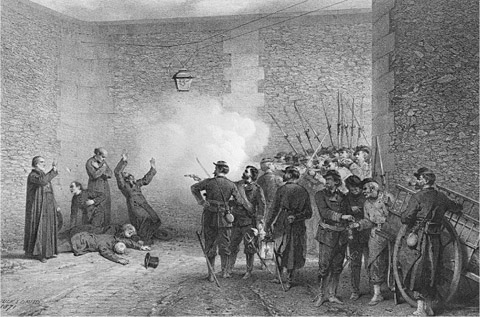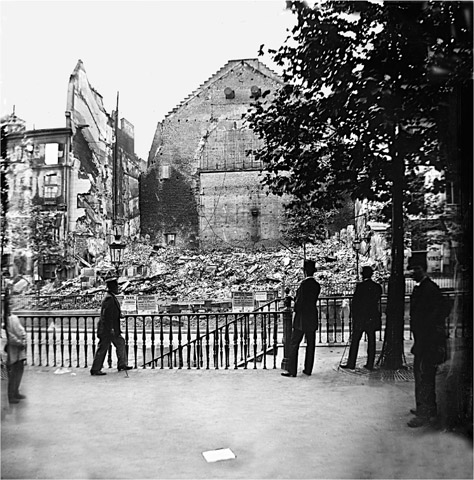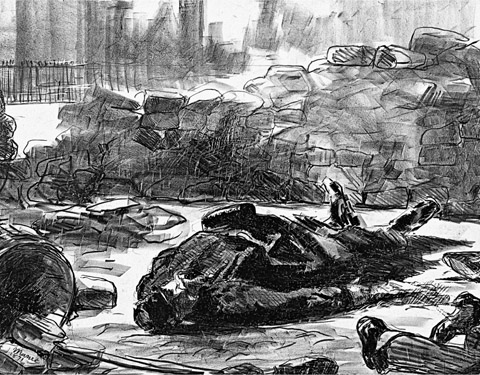Massacre (2 page)
Authors: John M. Merriman

2 Communard cannons and fighters protecting the ramparts of Paris.

3 Cannons and a barricade erected by the Communards on Porte Saint-Ouen defend the Commune.

4 A massive Communard barricade temporarily protects rue de Castiglione.

5 ‘Summary executions in Paris – Shooting Down Communist Prisoners’:
Harper’s Weekly
depicts the execution of communist (sic) prisoners by Versailles troops after the fall of the Commune.

6 The corpses of anonymous Communards executed by the Versailles army.

7 Paris aflame, seen from the Solferino bridge, 24 May 1871.

8 The Hôtel de Ville burns in Paris, 24 May 1871.

9 A woman accused of being a
pétroleuse
(female incendiary) is executed by the Versaillais.

10 Buildings burning on rue de Rivoli, 24 May 1871.

11 The Hôtel de Ville after the fire of 24 May 1871.

12 Execution of Archbishop Georges Darboy and five other hostages at La Roquette prison, 24 May 1871.

13 Elegant Parisians return to their city, much of which had been left in ruins by the fighting and the cannons of the Versaillais.

14 Édouard Manet’s ‘Civil War’, 1871.
Prologue
O
N
18 M
ARCH
1871, P
ARISIANS LIVING ON
M
ONTMARTRE AWAKENED
to the sounds of French troops attempting to seize the cannons of the National Guard. The troops were under the orders of Adolphe Thiers, the conservative head of a provisional government recently ensconced in Versailles, once the residence of the Bourbon monarchs of the Ancien Régime. Thiers, fearing the mobilisation of angry and radicalised Parisians, wanted to disarm Paris, and its National Guard. The ranks of the Guard were filled for the most part by workers who wanted a strong republic and were angered by the capitulation of the provisional government in the disastrous war against Prussia that had begun the previous July and brought about the fall of the Second Empire.
Despite the efforts of the French army, the men and women of Montmartre, Belleville and Buttes-Chaumont courageously prevented the troops from taking the cannons. Seeing the arrival of some 4,000 soldiers on Montmartre, who halted to await the horses necessary to haul the weapons down the hill, women sounded the alarm. Working-class residents of the butte overlooking the French capital prevented the heavily armed troops from hitching the cannons to the horses and began to build barricades, that traditional act of revolutionary defiance. Soldiers began to fraternise with the people of Montmartre. The 6,000 troops sent to Belleville, La Villette and Ménilmontant fared no better. Parisians would keep their cannons.
